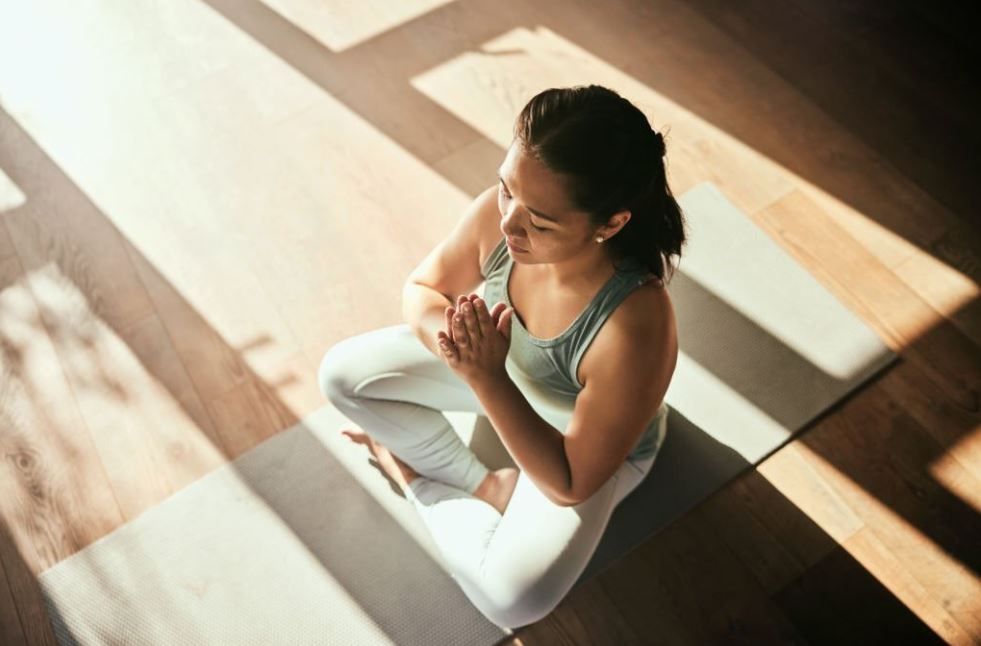Ashtanga Yoga is a dynamic and physically demanding form of yoga that follows a specific sequence of postures and synchronized breathing. It offers numerous benefits for the body, mind, and spirit. Many individuals who are interested in practicing Ashtanga yoga wonder if it’s possible to learn and practice it in the comfort of their own homes. In this article, we will explore the feasibility of Can You Learn Ashtanga Yoga at Home and provide practical tips for those who wish to embark on this journey.
Yoga has become increasingly popular worldwide, with people recognizing its ability to promote physical well-being, reduce stress, and enhance mental clarity. Ashtanga yoga, in particular, has gained attention for its rigorous practice and transformative effects. Traditionally, Ashtanga yoga is taught in a structured and disciplined manner by a qualified teacher. However, with the advent of technology and the availability of online resources, learning and practicing Ashtanga yoga at home has become more accessible.
What is Ashtanga Yoga?
Ashtanga yoga is a system of yoga that was popularized by Sri K. Pattabhi Jois. It consists of a set sequence of postures, which are linked together with flowing movements and controlled breathing. The primary series, also known as Yoga Chikitsa, focuses on realigning and detoxifying the body. The intermediate and advanced series build upon the foundation established in the primary series, offering a deeper exploration of the body and mind.
Benefits of Ashtanga Yoga
Before delving into the topic of learning Ashtanga yoga at home, it’s important to understand the benefits that this practice can provide. Ashtanga yoga offers a holistic approach to well-being, encompassing physical, mental, and spiritual aspects of one’s being.
Physical Benefits
The practice of Ashtanga yoga enhances strength, flexibility, and balance. The flowing movements, combined with the dynamic transitions between postures, build muscular endurance and tone the body. Regular practice can improve cardiovascular health, increase stamina, and promote weight loss.
Mental and Emotional Benefits
Ashtanga yoga is often described as a moving meditation. The synchronized breathing and focused attention on the practice help calm the mind and reduce stress. Regular practitioners report improved concentration, mental clarity, and an increased ability to manage emotions.
Spiritual Benefits
Ashtanga yoga incorporates philosophical principles, including the understanding of the self and the interconnectedness of all beings. Through consistent practice, individuals may experience a deepening sense of spirituality, inner peace, and a connection to something greater than themselves.
Read More: Kunjal Kriya Benefits for Skin
Can You Learn Ashtanga Yoga at Home?
Learning Ashtanga yoga at home is indeed possible, but it requires dedication, discipline, and a mindful approach. While having a qualified teacher is invaluable, with the right resources and a structured approach, you can embark on your Ashtanga yoga journey from the comfort of your own home.
The Importance of a Qualified Teacher
Although learning at home, it’s crucial to seek guidance from a qualified Ashtanga yoga teacher. A teacher can provide personalized instruction, correct alignment, and guide you through the various aspects of the practice. Look for online classes or virtual sessions with experienced teachers who can offer insights and modifications tailored to your needs.
Establishing a Dedicated Practice Space
Creating a dedicated practice space at home is essential for learning Ashtanga yoga. Find a quiet and uncluttered area where you can lay down your mat and have enough room to move freely. Ideally, the space should be free from distractions, allowing you to focus fully on your practice.
Structuring Your Practice
To learn Ashtanga yoga at home, it’s important to establish a structured routine. The practice follows a specific sequence of postures, and maintaining consistency is key. Begin with the primary series and gradually progress to the intermediate and advanced series as you build strength and flexibility. Breaking down the practice into manageable sections can help you gradually progress through the sequence.
Utilizing Online Resources and Classes
The internet provides a wealth of resources for learning Ashtanga yoga at home. There are online classes, tutorials, and instructional videos available that can guide you through the practice. Look for reputable sources that align with the traditional teachings of Ashtanga yoga and provide clear instructions on alignment, modifications, and breath control.
Seeking Feedback and Guidance
While practicing at home, it’s important to seek feedback and guidance to ensure you are progressing correctly. Consider participating in virtual workshops or joining online communities where you can connect with other practitioners and receive valuable feedback from experienced teachers. Sharing your challenges and progress with a supportive community can help you stay motivated and inspired.
Tips for Learning Ashtanga Yoga at Home
Learning Ashtanga yoga at home requires dedication and consistency. Here are some tips to enhance your home practice:
Start with the Basics
If you’re new to Ashtanga yoga, begin with the foundational postures of the primary series. Focus on understanding the alignment and breathing techniques before moving on to more advanced poses. Building a strong foundation will ensure safety and prevent injuries.
Follow a Structured Routine
Create a daily or weekly practice schedule and stick to it. Consistency is key in Ashtanga yoga. Set aside dedicated time for your practice, treating it as a non-negotiable appointment with yourself. This commitment will help you progress and experience the transformative benefits of the practice.
Practice Mindfully and Safely
Pay attention to your body and practice mindfully. Listen to the cues and signals your body provides, respecting its limitations and boundaries. Avoid pushing yourself beyond your current capabilities and always prioritize safety. Modify the poses as needed and use props to support your practice.
Stay Consistent and Patient
Progress in Ashtanga yoga takes time. Stay committed to your practice, even when it feels challenging or you encounter obstacles. Patience is key as you work through the different postures and build strength and flexibility. Celebrate small milestones and acknowledge the progress you make along the way.
Common Challenges and How to Overcome Them
Learning Ashtanga yoga at home can present certain challenges. Here are some common obstacles and strategies to overcome them:
Lack of Motivation
Staying motivated without the presence of a teacher or a group class can be challenging. Set realistic goals and remind yourself of the benefits you’ll gain from a consistent practice. Find inspiration in reading books or articles about Ashtanga yoga and its transformative effects. Connect with a virtual community to share experiences and receive encouragement.
Self-Discipline and Accountability
Practicing at home requires self-discipline. Create a routine and stick to it. Hold yourself accountable by tracking your progress, setting milestones, and rewarding yourself for your dedication. Consider finding an accountability partner or joining online challenges to stay motivated and committed.
Modifications and Adaptations
Not having a teacher present may make it challenging to know if you’re performing the postures correctly. Utilize online resources that provide detailed instructions and demonstrations. Listen to your body and make modifications as necessary to accommodate any limitations or injuries you may have. Seeking feedback from experienced practitioners or teachers through virtual workshops can also help refine your practice.
Dealing with Limitations
Everyone has physical limitations or pre-existing conditions that may affect their practice. Be mindful of these limitations and adjust your practice accordingly. Consult with a healthcare professional if you have any concerns or specific health conditions that need attention. Seek guidance from a qualified teacher or therapist who can suggest modifications or alternative poses to accommodate your needs.
Learning Ashtanga yoga at home is an exciting and rewarding journey. While having a qualified teacher is invaluable, with the right resources, dedication, and structured approach, you can cultivate a meaningful and transformative practice within the comforts of your own space. Embrace the challenges, stay consistent, and enjoy the profound benefits of Ashtanga yoga.
Read More: 4 Person Yoga Poses Easy and Its Benefits
FAQs
- Is it necessary to have previous yoga experience to learn Ashtanga yoga at home? While previous yoga experience can be helpful, it’s not necessary. Ashtanga yoga can be learned by beginners who are willing to commit to the practice and follow proper guidance.
- How often should I practice Ashtanga yoga at home? Aim to practice at least three to four times a week to experience progress and benefits. Consistency is more important than the duration of each session.
- What equipment do I need to practice Ashtanga yoga at home? All you need is a yoga mat, comfortable clothing, and optionally, props such as blocks and straps to support your practice and enhance alignment.
- Can I learn advanced poses through home practice? With dedication and consistent practice, you can gradually progress through the Ashtanga yoga series, including advanced poses. Seek guidance from experienced teachers as you advance.
-
How can I maintain motivation for a consistent home practice? Set realistic goals, establish a routine, find inspiration from various sources, connect with a supportive community, and track your progress to stay motivated on your Ashtanga yoga journey.



